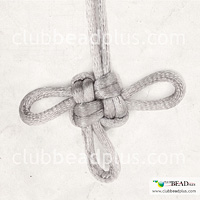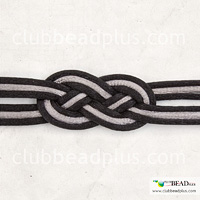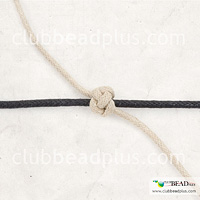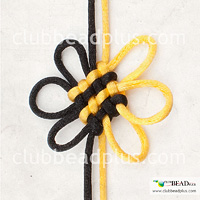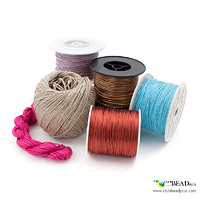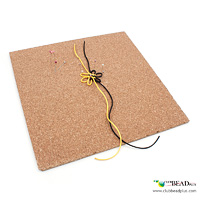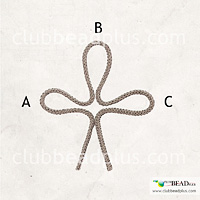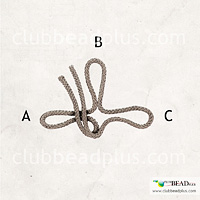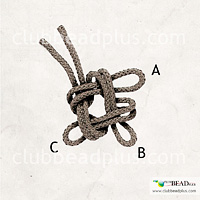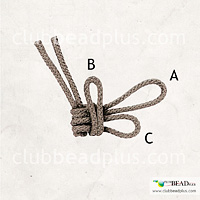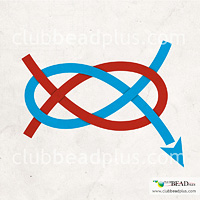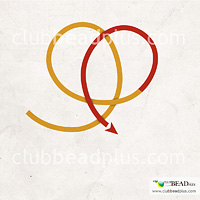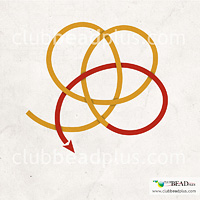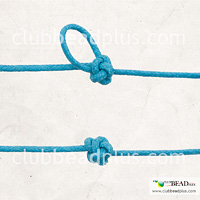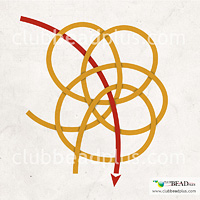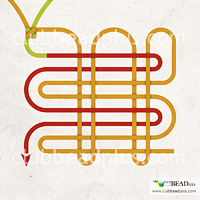Decorative knots
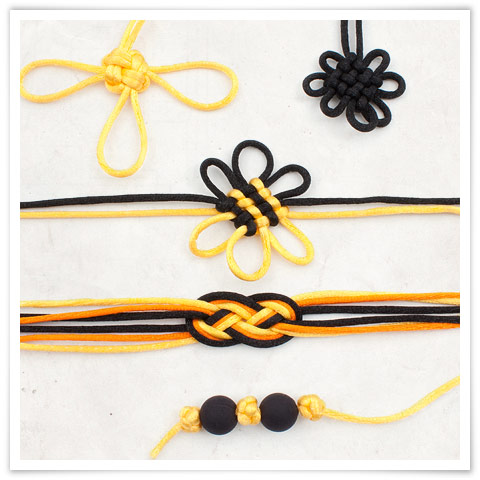
Material
- Selected cords
- Ball Head Pins
Tools
- Scissors
- Transparent liquid glue
- Tweezers
- Cork tray
The Good Luck Knot(Chinese knot)

Preparation
Making the knot
Tip :To get even knots you need to work meticulously. Pay attention to the tension that you apply on the cords, as you need to apply the same tension as you go.
Once the knot has been tightened, reposition the pins on loop A and B.
The Carrick bend(Sailors knot)

Preparation
Making the knot
The Celtic Button Knot(Celtic knot)
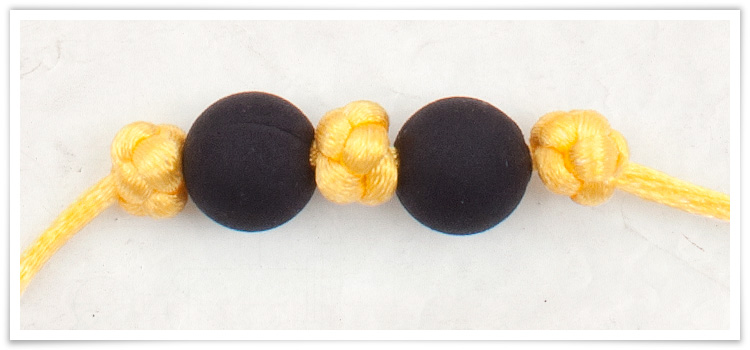
Preparation
Making the knot
Tip :If needed, take the end of the cord using the tweezers to pass the cord through the loops with more ease.
The Pan Chang Knot(Chinese knot)
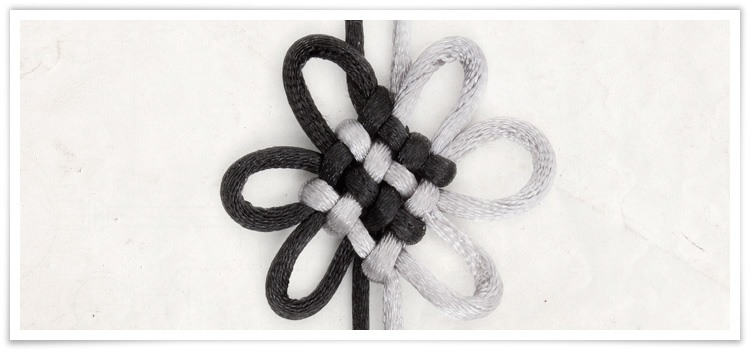
Preparation
First, choose the cords you would like to work with. If this is your first time, it is recommended to work with two cords of different colors. Measure and cut 90 cm of each cord’s color or 180 cm of one cord.
To make this knot, it is essential to pin your cord on a working surface such as a cork tray because it requires practice and attention. Pin the cord after each step.
Since this knot requires a lot of threading, to ease the making of the pattern, it is recommended to harden the end of the cords to create makeshift needles. To harden the ends, you can burn them (if it is a cord made of synthetic fibers) or you can apply a drop of glue on each end of the cord and let them dry.
Making the knot
Warning :Please note that the size of the working surface varies depending on the size of the cord. The bigger the cord, the bigger the working surface. The bigger the working surface, the more cord you will need. The external loops of the cord will then be bigger as well.






